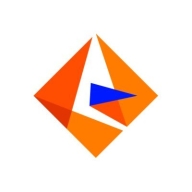

Informatica PowerCenter and Tableau Enterprise compete in the data integration and visualization space. Informatica PowerCenter leads in data integration capabilities, while Tableau Enterprise excels in data visualization.
Features: Informatica PowerCenter supports large data volumes with robust data integration and extensive transformation functionalities. It provides comprehensive data governance, security, and performance features beneficial in high-stakes environments. Tableau Enterprise offers powerful data visualization and a user-friendly experience, integrating seamlessly with diverse data sources to deliver interactive dashboards and rich graphics.
Room for Improvement: Informatica PowerCenter is costly and requires expertise for setup and troubleshooting, with limited cloud integration support. Tableau struggles with scalability on large datasets and complex metadata management, and its enterprise-level pricing is high, with users desiring more robust integration features and advanced ETL.
Ease of Deployment and Customer Service: Informatica PowerCenter is primarily on-premises, requiring skilled professionals for installation, with mixed reviews on technical support responsiveness. Tableau supports mixed deployments, praised for ease of use but criticized for costly user licenses. Its customer service is generally positive, notwithstanding some integration and scalability challenges in large-scale deployments.
Pricing and ROI: Informatica PowerCenter is valued for its data integration capabilities, justifying its high cost in environments with complex integration needs. Tableau Enterprise offers excellent data visualization, with various licensing options, though perceived as expensive, especially for smaller firms focused on strong visual analytics and ease of use.
It also plays a vital role in revenue calculations, net asset valuations, and other key factors that support customer data and investment data pipelines.
This saves a significant amount of time, particularly for reports that would have needed around fifty people.
The ROI of using Tableau extends to its seamless integration across various platforms, as it's from Salesforce and thus not limited to any specific cloud provider.
Tableau is saving me time, money, and resources, which I would rate as ten.
I like the technical support provided by Informatica.
I have occasionally needed to communicate with the technical support of Informatica PowerCenter, especially when raising cases for complex mappings and performance optimization to identify bottlenecks in transformations.
They provide quick email and phone responses and have Thai-speaking personnel.
There should be consistent standards for all users.
The technical support for Tableau is quite good.
In the cloud, scaling up and down becomes easy when working with cloud providers.
For scalability, I would rate Informatica PowerCenter between eight to nine.
Tableau is easy to use across various dimensions, whether on-premises or on the cloud.
The solution is fully scalable and performs well even with large datasets, provided there is proper supporting hardware.
Tableau is easy to scale.
Informatica PowerCenter is stable and can scale well.
The product is very stable with very few issues encountered in production.
The application hangs after continuous use due to the buildup of cache.
I rate the stability a five or six because Tableau updates very often with new versions or patches.
With Informatica PowerCenter, I am looking for an AI interface that looks at the underlying data model of the databases and the metadata of the tables, allowing the developer to provide instructions on what data sources to connect to and how to apply or create Transformations.
Utilizing more stored procedures from Oracle databases in an easy way would significantly boost performance.
Informatica Cloud and its support becomes quite expensive for the organization compared to peers such as SnapLogic or Netezza, which offer lower pricing.
We cannot send the entire Excel file reports via email within Tableau.
The product owner should enhance its benefits or clarify its role.
It sometimes requires extensive investigation to determine why the data does not appear correctly.
I find that the pricing and licensing for Informatica PowerCenter align with its quality.
The price of Informatica PowerCenter is high, especially for small and medium-sized businesses.
Power BI as a much cheaper alternative.
A license for 150 users costs around $17,000 USD per year.
Looker is known to be quite expensive.
The system supports real-time integration, which is essential for many of my tasks.
The functions in Informatica PowerCenter that I have found most valuable are the way it manages the volume of data, the push down optimization, and the performance aspects of it, mostly related to parallelism techniques.
The most valuable features of Informatica PowerCenter that I have found so far include transformations, the ease of connectivity with different source systems, and the parameter files.
A significant feature for me is the real-time connection to data sources because it effectively manages large data sets.
Tableau serves as a stable dashboarding tool for higher management, aiding in quick decision-making.
Building hyper extracts and visualization capabilities make Tableau a robust tool for data analysis.
| Product | Market Share (%) |
|---|---|
| Tableau Enterprise | 19.2% |
| Informatica PowerCenter | 1.4% |
| Other | 79.4% |


| Company Size | Count |
|---|---|
| Small Business | 15 |
| Midsize Enterprise | 10 |
| Large Enterprise | 72 |
| Company Size | Count |
|---|---|
| Small Business | 117 |
| Midsize Enterprise | 66 |
| Large Enterprise | 182 |
Informatica PowerCenter is a data integration and data visualization tool. The solution works as an enterprise data integration platform that helps organizations access, transform, and integrate data from various systems. The product is designed to support companies in the full cycle of a project, from its initial rollout to critical deployments. Informatica PowerCenter allows developers and analysts to collaborate while accelerating the work process to deploy projects within days instead of months.
The Advanced edition of the product provides an additional real-time engine which allows companies to have always-on enterprise data integration. This ensures seamless collaboration and increment of data lineage visibility and impacts analysis.
The Premium edition of the solution offers an early warning system that detects unexpected behaviors or incorrect utilization of resources in the workflows and alerts companies in the case that these occur. This version of the product also offers automatic data validation, which ensures data accuracy and reduces testing time and expenditure of resources for by up to 90%.
Informatica PowerCenter Features
The product provides users with various features which allow them to execute data integration initiatives such as analytics, data warehousing, data governance, consolidation, and application migration. The features of the solution include:
Informatica PowerCenter Benefits
The benefits of using Informatica PowerCenter include:
Reviews from Real Users
Yahya T., a developer and architect at L'Oreal, says the product is stable, provides good support, and integrating it with other systems is very fast.
Mohamed E., a senior manager for Data management and data governance at a tech company, says PowerCenter is stable, mature, and offers flexibility in building the pipeline and has a drag-and-drop mode because it's GUI-based; technical support is brilliant.
Tableau Enterprise offers powerful features for creating interactive visualizations, dashboards, and maps, including drag-and-drop functionality and easy integration with multiple data sources, promoting real-time collaboration and self-service analysis.
Tableau Enterprise stands out with its ability to create user-friendly, interactive visualizations, making it pivotal for business intelligence applications. Users benefit from its seamless connectivity and advanced analytical functions, facilitating data blending and storytelling. Despite a complex learning curve and high licensing costs, its features like geospatial analysis and efficient content distribution drive its indispensable value for data-driven insights. Enhancements in predictive analytics and support integration with machine learning tools further its capabilities across industries.
What are the most valuable features?Tableau Enterprise is widely used for business intelligence, supporting industries like healthcare, telecommunications, and finance. Organizations utilize it to analyze performance indicators, operational insights, and financial analytics, enhancing decision-making through interactive reports and real-time data integration.
We monitor all Data Visualization reviews to prevent fraudulent reviews and keep review quality high. We do not post reviews by company employees or direct competitors. We validate each review for authenticity via cross-reference with LinkedIn, and personal follow-up with the reviewer when necessary.